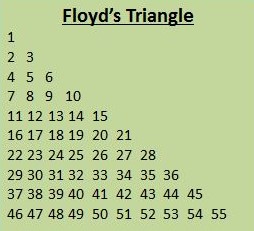ROTATION IN 2D TRANSFORMATION
A two-dimensional rotation is applied to an object by repositioning it along a circular path within the xy plane. to come up with a rotation, we specify a rotation angle 0 and also the position (x, y) of the rotation point (or pivot point) about which the article is to be rotated.
Positive values for the rotation angle define counterclockwise rotations about the pivot point, and negative values rotate objects within the clockwise direction. This transformation also can be de- scribed as a rotation a few rotation axis that's perpendicular to the xy plane and passes through the pivot point.
Positive values for the rotation angle define counterclockwise rotations about the pivot point, and negative values rotate objects within the clockwise direction. This transformation also can be de- scribed as a rotation a few rotation axis that's perpendicular to the xy plane and passes through the pivot point.
The original coordinates of the purpose in polar coordinates are
x = r cos Φ, y = r sin Φ
x = r cos Φ, y = r sin Φ
Rotation is expressed relative to origin. This also means that the sides in figures that are rotated create new angles with the axes after a rotation. We assume that the positive rotation angle is counterclockwise.
Rotation defined by |
x = r·cos(Φ)
y = r·sin(Φ)
x' = r·cos(Φ + θ)
BY BASE OF TRIGONOMETRIC FORMULA USING FOR SUBSTITUTION,
sin(A+B) = sinA.cosB + cosA.sinB cos(A+B) = cosA.cosB - sinA.sinB |
BY SUBSTUITING,
x' = r[cos Φ.cos θ - sin Φ.sin θ]
= r.cos Φ.cos θ – r.sin Φ.sin θ]
x' = x.cos θ – y.sin θ
y' = r[sin Φ.cos θ + cos Φ.sin θ]
= r.sin Φ.cos θ + r.cos Φ.sin θ]
y' = y.cos θ + x.sin θ
AT FINALLY,
x' = x.cos θ – y.sin θ
y' = y.cos θ + x.sin θ
MATRIX REPRESENTATION
 P' = R.P (Based on origin)
P' = R.P (Based on origin)
 [ x' ] [ cos θ – sin θ] [ x ]
[ x' ] [ cos θ – sin θ] [ x ] [ y' ] = [ sin θ cos θ ] [ y ]
ROTATION BASED ON FIXED POINT
x' = xr + (x - xr).cos θ – (y - yr).sin θ
y' = yr + (x - xr).sin θ + (y - yr).cos θ












Comments
Post a Comment